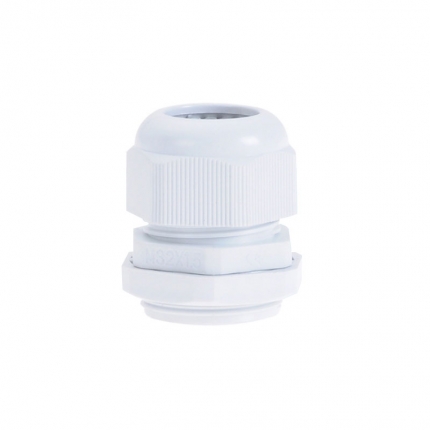Normally, the standard
electrical wire connectors made of plastic or metal are chosen as the standard ones, or threaded connectors with anti-electromagnetic interference design or can be used in explosion-proof areas. For applications with extreme loads, it is recommended to select cable connectors with bending protection and clamps.
Specification Requirements for Type Selection of
Cable glands1. Insulating glands should be used in the connecting parts of the insulating metal sheath of single-core high-voltage cables which are grounded by cross-connection. Insulating glands should be used to monitor the connection of adjacent units in the way of cross-connection grounding according to sections of insulation. Insulating glands can also be used.
2. T-type or Y-type branching glands shall be used when branching is required in cable lines.
3. When three-core cable is connected with single-core cable, the transfer gland should be used.
4. When oil-impregnated paper insulation is connected with extruded insulated cable, the transition gland shall be adopted.
6. In addition to the above conditions, the cable connection shall adopt a through gland.
7. The type of cable gland shall be selected according to the insulation type, installation environment and operation conditions of the connecting cable to meet the reliability and economic rationality required by the project, and shall comply with the following provisions:
1. The glands of underwater cables should be able to maintain the longitudinal continuity of the steel armor layer and have sufficient mechanical strength. Soft connection should be used.
2. For large current glands which need to limit temperature rise, low thermal resistance materials should be selected to improve thermal performance.
The insulation characteristics of cable glands shall comply with the following requirements:
1. The rated voltage of the gland and its insulation level shall not be lower than the rated voltage of the cable to be connected and the required insulation level.
2. The withstanding voltage on both sides of the insulation ring of the insulating gland shall not be less than twice the insulation level of the cable sheath.
The arrangement of cable terminals and glands shall meet the requirements of installation and maintenance, as well as the configuration requirements of expansion glands with allowable bending radius of cables, and shall comply with the following provisions:
1. The structure of the terminal bracket should be conducive to the installation of cables and their components; when the working current is greater than 1500A, the bracket structure should have additional heating measures such as preventing the closure of the transverse magnetic circuit.
2. Areas adjacent to electrified traffic lines that have erosion effects on cable metal cladding. Connector settings should be easy to monitor and maintain.


